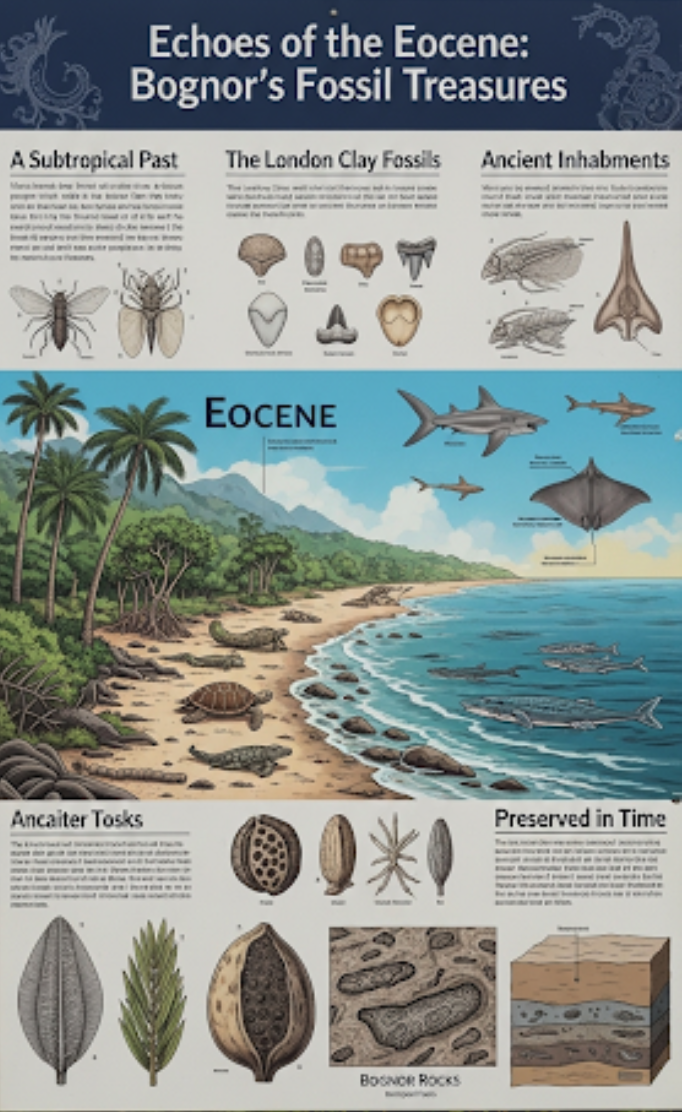🏠 Pre-historic
Palaeogene period (56-34 million years ago)
Bognor Regis holds significant geological interest due to its exposures of rocks from the Palaeogene period, specifically the Eocene epoch, which dates back approximately 56 to 34 million years ago. During this time, the region that is now Bognor Regis was part of a warm, shallow marine basin, likely resembling a sub-tropical environment with lush coastal vegetation, similar to modern-day Southeast Asia or East Africa.
The most prominent geological formation from this period in Bognor Regis is the London Clay Formation, particularly its "Bognor Sand Member" and various divisions exposed along the foreshore, especially west of the pier towards Aldwick and Pagham. These blue-grey silty clays and sands are internationally renowned for their well-preserved fossil content.
Key aspects of the Eocene in Bognor Regis include:
-
Depositional Environment: The London Clay and associated sediments were deposited in a shallow marine basin, with significant input of terrestrial material from nearby rivers. This mix of marine and land-derived sediments explains the diverse fossil record.
-
Climate: Fossils indicate a much warmer climate than today, with evidence of tropical or sub-tropical flora. Mangrove palms (like Nypa) were common along the coast, and the terrestrial areas were covered by dense forests akin to modern rainforests.
-
Fossil Discoveries: Bognor Regis is a highly productive site for Eocene fossils. Common finds include:
-
Marine Invertebrates: Abundant brachiopods, bivalves (some of which are very large, like Pinna affinis), gastropods, and worm tubes.
-
Vertebrates: A rich assemblage of fish remains, including numerous shark and ray teeth, as well as bony fish debris (teeth, scales, otoliths). Rarer finds include marine reptiles (turtles, crocodiles) and even some land-derived mammal bones and teeth.
-
Plants: Well-preserved plant fossils are particularly significant, especially seeds and fruits. Over 350 species of plants have been identified from the London Clay, including palm fruits, showing the diverse flora of the time. Bognor Regis is also a "type locality" for certain fossil insects, especially beetles, making it one of the few places in Britain to yield Eocene insect fossils.
The foreshore at Bognor Regis provides intermittent exposures of these fossil-rich clays and sands, especially at low tide, making it a popular spot for fossil collectors and researchers interested in this ancient sub-tropical ecosystem.
